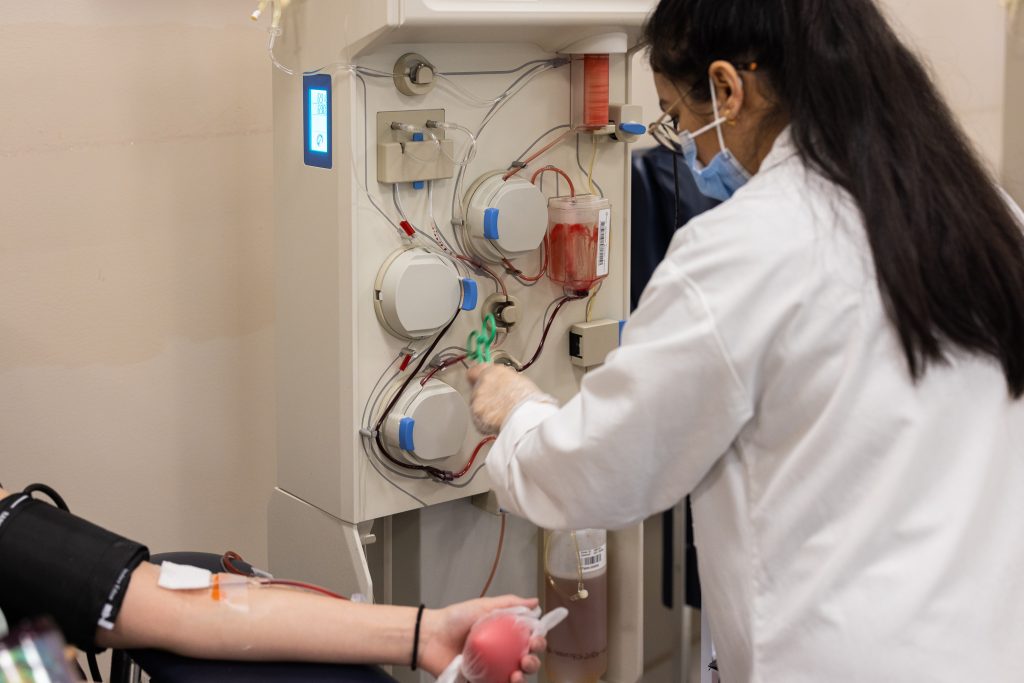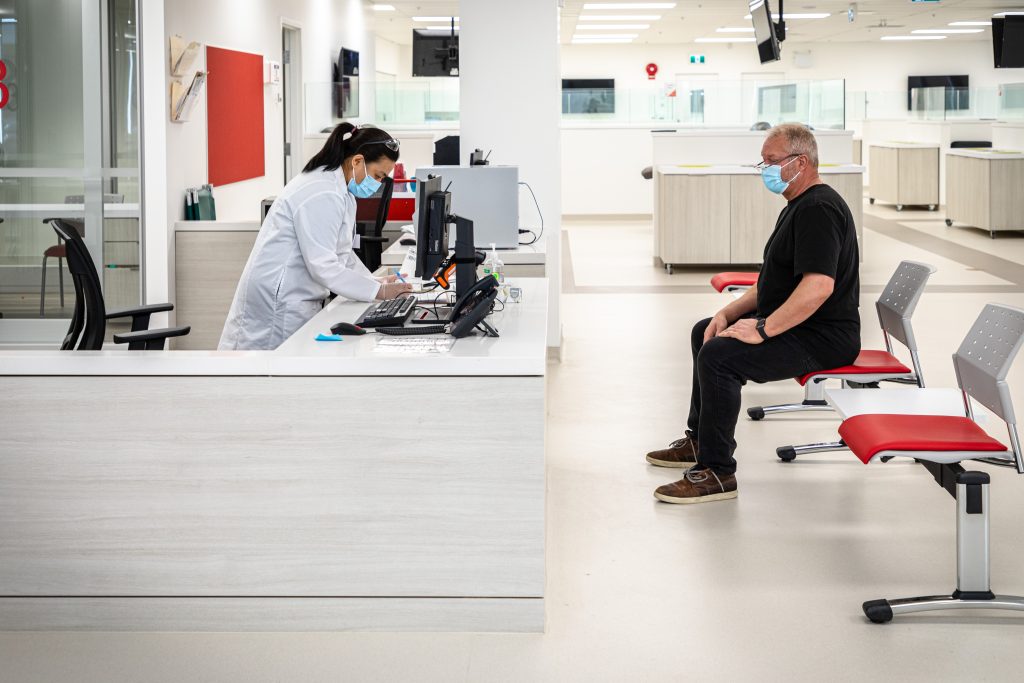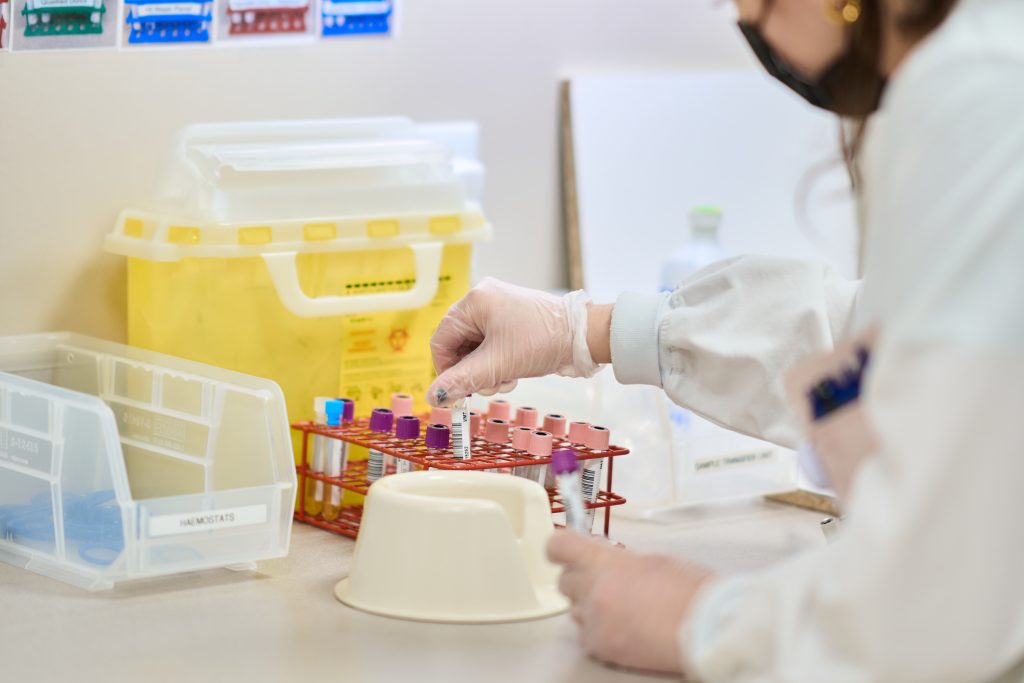Blog
June 1, 2023
Plasmapheresis is a treatment process that separates plasma from blood cells.
While plasma exchange is similar, there are a couple of key differences. Plasma exchange not only separates plasma from blood, it also removes harmful antibodies from the bloodstream. Usually, this plasma is discarded and substituted with a replacement fluid. Whereas with plasmapheresis, the plasma is manipulated once it’s separated and it’s returned to the body. We’re breaking down all of the specific of these key differences below – so if you aren’t a doctor or a scientist, don’t worry – we’ve got you covered.
What is Plasmapheresis?
Plasmapheresis is the plasma donation process that we use here at our centres. The plasmapheresis process involves being connected to a plasmapheresis machine in order to have your plasma separated and extracted from whole blood. Here’s how the process works here at DB Plasma:
Step 1. The Plasmapheresis Machine
Donors are connected to a plasmapheresis machine. The plasmapheresis machine withdraws all of the components of blood, separating plasma from the other blood cells before returning those other components back to the body.
Step 2. The Donated Plasma is Frozen
After you donate plasma, it has to be frozen within 24 hours in order for it to be viable. From there, it will be able to be supplied to patients in need!
Step 3. Patients in Need Receive Plasma Treatments.
Donated plasma can be used in a variety of different treatments, from treating patients with chronic illnesses to trauma victims.
When it comes to treating the latter, Plasma is used to heal tissue with platelet-rich plasma therapy, otherwise known as PRP therapy. This is the most common treatment method for healing tissue with plasma due to injuries from everyday accidents.
What is Plasma Exchange?
While plasmapheresis separates the components of blood and plasma intravenously, plasma exchange involves completely removing the plasma and swapping it in with replacement fluid. This, like plasmapheresis, is a process of apheresis. Apheresis simply describes the process of filtering out the plasma from whole blood: and the key difference between these two processes is what is done with the plasma once it’s separated (ie, it’s filtered or extracted entirely).
Thank You for Donating
Thank you for taking the time to learn about the differences between plasmapheresis and plasma exchange. We value your time as a donor and appreciate your willingness to be an informed member of the Give Plasma community! To book your plasma donation appointment today, visit our website.





